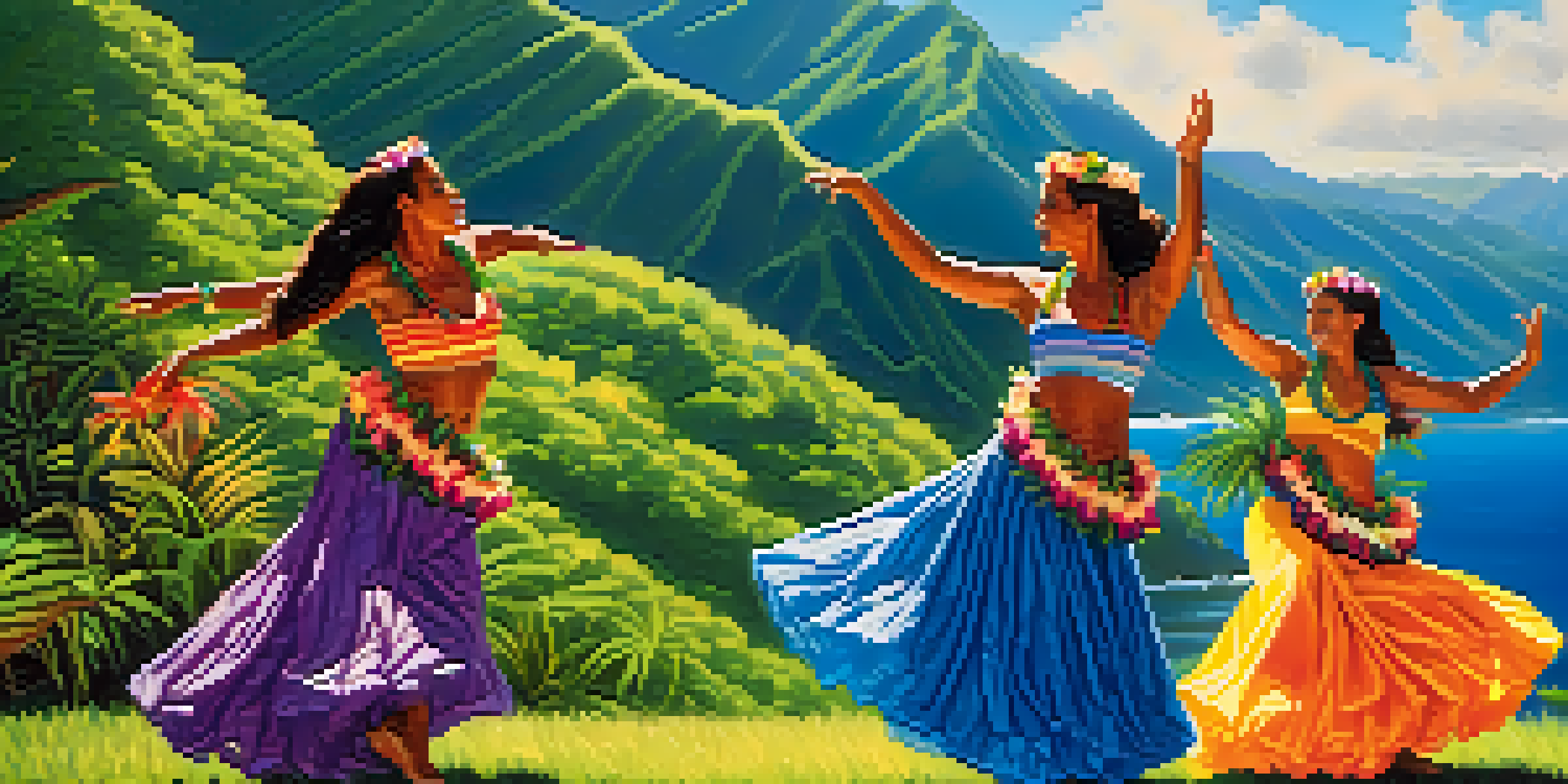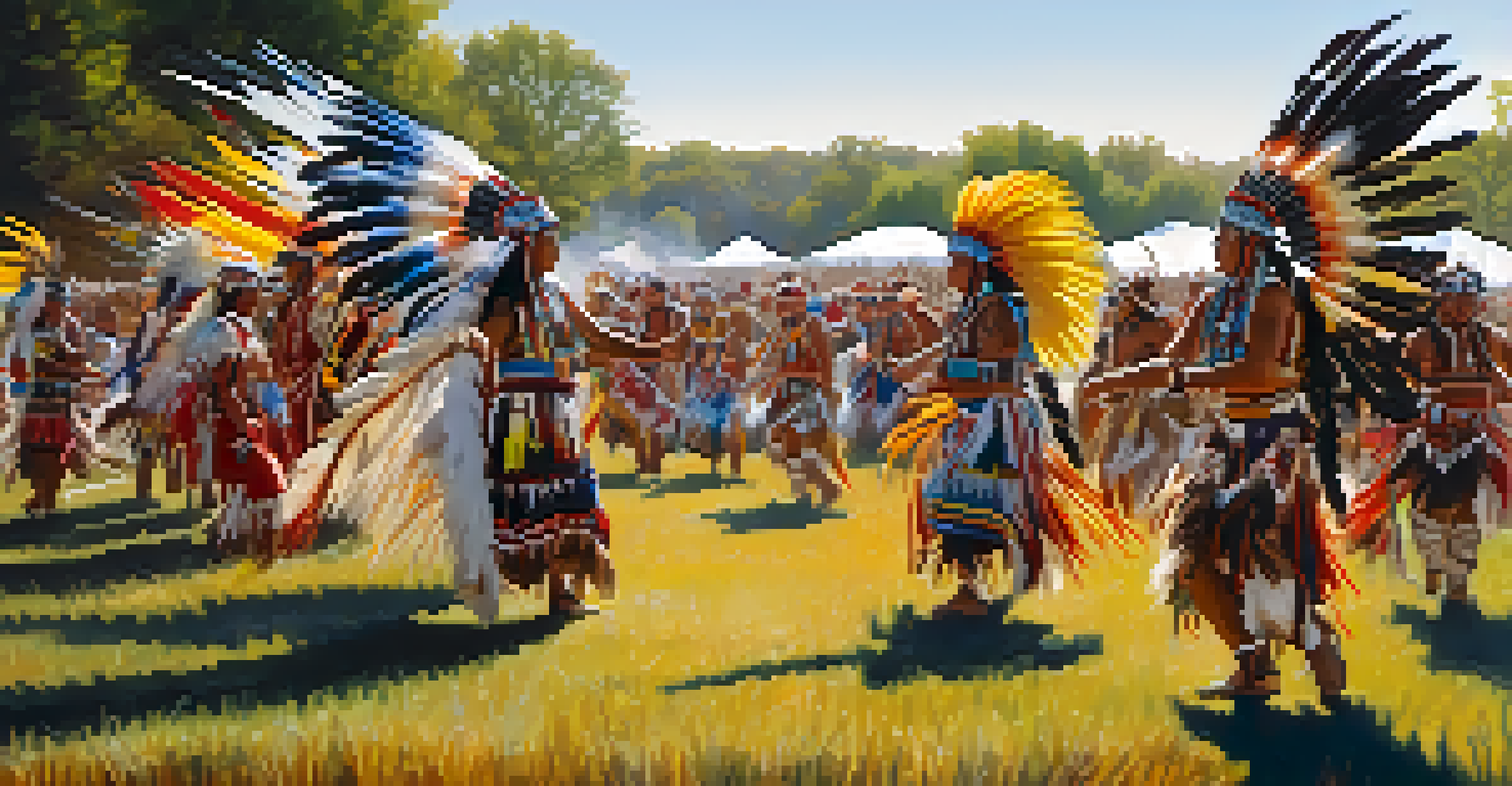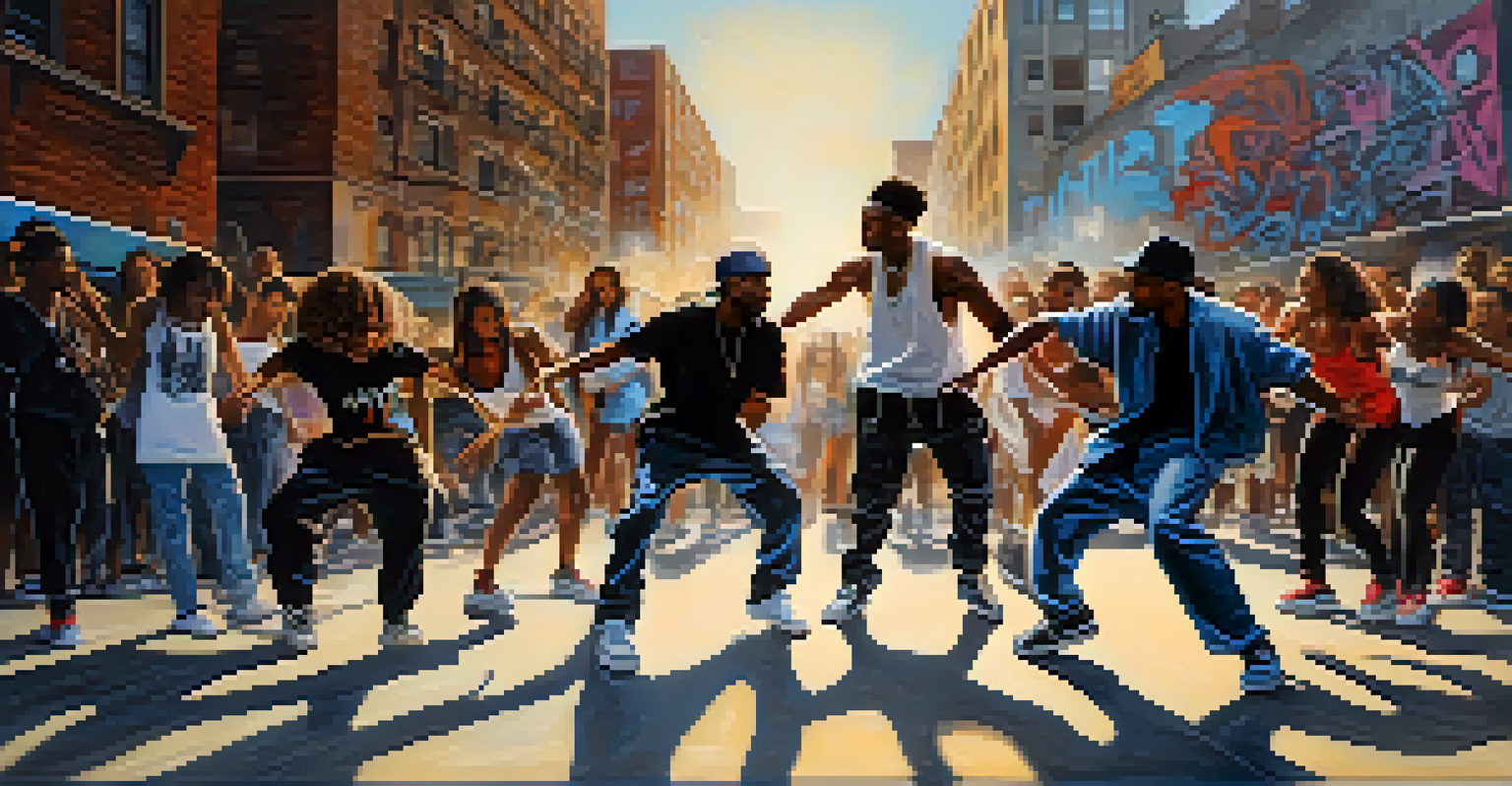Dance as a Reflection of Cultural Folklore and Myths

The Roots of Dance in Cultural Heritage
Dance has long been a vital aspect of human expression, often rooted in cultural heritage. It serves as a medium for storytelling, connecting generations through shared traditions. Many dances celebrate historical events, mythological figures, or natural elements, making them a living archive of a community's beliefs and values.
Dance is the hidden language of the soul.
For example, the traditional Indian dance Bharatanatyam narrates ancient tales through intricate movements and expressions. Similarly, the Hula dance of Hawaii conveys stories of gods, nature, and the island's history, showcasing how dance can be both an art form and a narrative vehicle.
Thus, dance not only reflects cultural heritage but also plays a crucial role in preserving and transmitting these stories, ensuring that they are passed down through the ages.
Myths and Legends Brought to Life
Myths and legends are often the backbone of folk dances, with many performances directly depicting stories from ancient lore. These dances weave together movement, music, and costume to create a vibrant retelling of well-known tales. This multifaceted approach helps to keep these stories alive and relevant in contemporary society.

Take, for instance, the Greek dance Syrtos, which often celebrates the exploits of heroes like Hercules or Odysseus. Each step and rhythm evokes the essence of these larger-than-life characters, inviting audiences to experience their adventures through movement.
Dance Preserves Cultural Heritage
Dance serves as a living archive, connecting generations through storytelling and shared traditions.
Such dances not only entertain but also educate, reinforcing cultural identity and shared history, while simultaneously allowing performers and viewers to connect on a deeper emotional level.
Ritual Dances and Spiritual Beliefs
Many cultures incorporate dance into spiritual rituals, using movement to connect with the divine or the supernatural. These ritual dances often embody the beliefs and practices of a community, serving as a form of prayer or tribute. Through dance, participants express their devotion, seeking blessings, guidance, or healing.
Dance is the joy of movement and the heart of life.
For example, Native American powwows feature dances that honor ancestors and celebrate life cycles, reinforcing spiritual connections among the tribe. Similarly, the Sufi Whirling Dervishes use spinning as a form of meditation, embodying their spiritual journey toward divine love.
By engaging in these dances, participants not only express their faith but also reaffirm communal bonds, creating a shared experience that transcends individual beliefs.
Dance as a Reflection of Social Issues
Dance often serves as a powerful commentary on social issues, reflecting the struggles and triumphs of a community. Choreographers and dancers use their art to highlight themes such as inequality, oppression, or cultural identity, transforming movement into a means of advocacy. Through this lens, dance becomes a form of resistance and empowerment.
Consider the expressive power of hip-hop dance, which originated as a response to social and economic challenges faced by marginalized communities. Dancers use their bodies to convey messages of resilience and hope, bringing awareness to pressing social issues.
Dance Reflects Social Issues
Artistic expression through dance highlights social struggles and triumphs, transforming movement into advocacy.
This dynamic relationship between dance and society illustrates how art can provoke thought and inspire change, making it an essential tool for cultural expression.
Cross-Cultural Influences in Dance
As cultures interact and evolve, so too do their dances, leading to a rich tapestry of cross-cultural influences. This blending often results in new forms of dance that incorporate elements from various traditions, creating a vibrant cultural exchange. Such fusion dances can symbolize unity, diversity, and shared human experiences.
A prime example is the Brazilian Samba, which draws from African, Indigenous, and European influences, showcasing the country's diverse cultural heritage. Similarly, contemporary dance often fuses styles from around the world, enabling artists to express their multicultural identities.
These cross-cultural dances not only celebrate diversity but also promote understanding and appreciation among different communities, highlighting the universal language of movement.
The Role of Dance in Festivals and Celebrations
Dance plays a central role in cultural festivals and celebrations, often serving as the heartbeat of these events. From harvest festivals to religious celebrations, dance brings people together, creating a sense of belonging and joy. These communal experiences strengthen cultural ties and foster a sense of identity.
For example, the Carnival in Brazil bursts with vibrant samba parades, where dance becomes a joyful expression of life and community. Similarly, the Diwali festival in India features traditional dances that celebrate the victory of light over darkness, uniting families and friends in shared joy.
Cross-Cultural Dance Fusion
The blending of dance styles from various cultures fosters unity and appreciation for diverse human experiences.
Through dance, these celebrations become memorable, allowing participants to engage with their culture and create lasting connections with one another.
The Future of Dance as Cultural Expression
As we look to the future, dance will continue to evolve while remaining a vital expression of cultural folklore and myths. Advances in technology, social media, and global connectivity are reshaping how dance is created, shared, and experienced. This evolution offers exciting opportunities for cultural exchange and innovation.
For instance, platforms like TikTok have given rise to viral dance challenges that often blend various styles and cultural influences, reaching audiences worldwide. This phenomenon not only showcases the versatility of dance but also highlights its role as a form of contemporary storytelling.

As dance adapts to the changing landscape, it will undoubtedly maintain its significance as a reflection of cultural narratives, ensuring that the stories of our past continue to resonate in our future.